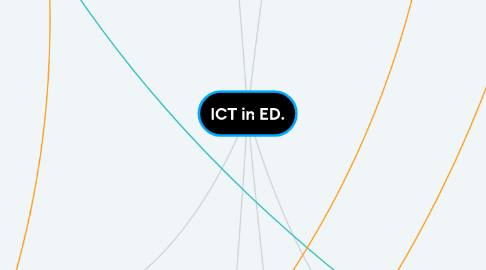
1. Connected from the Start: Global Learning in the Primary Grades By Kathy Cassidy
1.1. Learning to integrate Technology
1.1.1. Little bit at a time (don't need to try everything at once)
1.1.2. Use to replace outdated or overused activites
1.1.3. Engage Students
1.1.3.1. Used to Technology at home
1.2. Blogging
1.2.1. Connect with other classrooms
1.2.1.1. Same School Divition
1.2.1.2. Same country
1.2.1.3. Internationally
1.2.2. Connect with Family/Friends
1.2.2.1. Parents
1.2.2.2. Grandparents
1.2.2.3. Long Distance Family
1.2.3. Practice Writing Skills
1.2.4. Share images of pictures, school work, dioramas, ect made by students
1.2.5. Platforms
1.2.5.1. Kidblog
1.2.5.2. Edublogs
1.2.5.3. Weebly
1.2.5.4. Blogger
1.3. Social Media
1.3.1. Connect with other classrooms
1.3.1.1. Same school division
1.3.1.2. Same Country
1.3.1.3. Internationally
1.3.2. Connect with Family/Friends
1.3.2.1. Parents
1.3.2.2. Grandparents
1.3.2.3. Long Distance Family
1.3.3. Connect with Experts
1.3.4. Professional Development
1.3.5. New Ideas for the Classroom
1.3.6. Platforms
1.3.6.1. Twitter
1.3.6.2. Maple
1.3.6.3. Facebook
1.3.6.4. Pinterest
1.4. Video Chatting
1.4.1. Connect with Experts
1.4.1.1. Learn and ask question about a topic being learned in the classroom
1.4.2. Connect with other Classrooms
1.4.2.1. Same school division
1.4.2.2. Same Country
1.4.2.3. Internationally
1.4.2.4. Share Stories/Work
1.4.2.5. Read Alouds
1.4.2.6. Challenges: Math Problems, Exercise, etc
1.4.2.7. Promote a Global community/ Empathy for other people around the world
1.4.3. Platforms
1.4.3.1. Skype
1.4.3.2. Zoome
2. Portfolio
2.1. What?
2.1.1. An online Portfolio is similar to a physical portfolio but is accessible anywhere with an internet connection.
2.1.2. Often includes: information about yourself, pictures, teaching experience, work experience, professional development, contact information, sample lesson plans, classroom management plans, etc.
2.2. Why?
2.2.1. Easy to access (don't have to print hundreds of pages)
2.2.2. Can add more in-depth information than a resume or CV
2.2.3. Can add pictures and make visually appealing
2.2.4. Allows employers easily find you (whether you directed them to your profile or they happened to find you) and see your online presence
2.3. How?
2.3.1. Wix
2.3.2. Weeble
2.3.3. Google Sites
3. Teachers & Technology
3.1. Expectations
3.1.1. Integrate Technology without sacrificing regular curriculum
3.1.2. Use technology to help differentiate and engage students
3.1.3. How to use technology safety
3.2. How to accomplish expectations
3.2.1. Find opportunities to integrate
3.2.1.1. Blog with or instead of agenda writing
3.2.1.2. Allow students to record voice instead of write
3.2.1.3. Video projects: movie, book trailers, stopmotion
3.2.1.4. Subject Related app: Todo Math, ABYya!
3.2.2. Teach Responsibility, Ethics, Health and Safety
3.2.3. Introduce and try new kinds of technology
3.2.3.1. Digital Storyteling
3.2.3.2. Coding
3.2.3.3. Blogging
3.2.3.4. Video Chatting
3.3. Things I want to try in my Classroom
3.3.1. Writing Online
3.3.1.1. Edublogs
3.3.1.2. Classdojo
3.3.1.3. Being my first time using this kind of activity I want to use something that is very controlled and private in order to protect the privacy of my students.
3.3.2. Digital Storytelling
3.3.2.1. Storybird
3.3.2.2. I would like to make a class book with my students to further practice their writing skills. I think it would be great to use some kind of digital format so that it is easy to track their process.
3.3.3. Coding
3.3.3.1. I would like to introduce a little bit of coding in my classroom because it works on their problem solving and cooperation skills. I would probably start with an online program like Scratch until I could assess more resources for things like spheros.
3.3.3.2. Scratch
3.3.3.3. Sphero
3.3.4. Differentiation Technology
3.3.4.1. Interactive Schedules (first this, than this)
3.3.4.2. Translator
3.3.4.3. Using technology is another option that could help differentiate for students with learning and/or behaviour issues. It would also be great for English Language Learners so they can translate as needed.
4. Coding
4.1. Computational Thinking
4.1.1. Problem Solving skills
4.1.2. Persistance
4.1.3. Expressing a solution
4.1.4. Independent or Cooperation skills
4.2. New Skill
4.2.1. Possible interest for students
4.2.2. Possible career option
4.3. Platforms/Devices
4.3.1. Sphereos
4.3.2. Scratch
4.3.3. Tynker
4.3.4. Code.org
5. Literacy with ICT
5.1. Media/ Digital Literacy
5.1.1. Evaluate media legitimacy - evaluating sources
5.1.2. Finding useful and relevant information
5.1.3. Creating media
5.2. Health and Safety
5.2.1. Learning to moderate screen time
5.2.2. Learning when it is appropriate to share certain information
5.2.2.1. Name
5.2.2.2. Age
5.2.2.3. Location
5.2.2.4. phone number
5.2.3. Dealing with people online
5.2.3.1. trolls
5.2.3.2. Cyber Bullying
5.3. Ethics and Responsibilites
5.3.1. privacy of self and others
5.3.2. society right to information vs. individual's right to privacy
5.3.3. respects intellectual property
5.3.4. respects the rights of others to have theri own perspectives
5.3.5. Assesses the potential impact of decisions and actions of self, others and society
5.4. The LwICT Model
5.4.1. Inquiry
5.4.1.1. Question & Plan
5.4.1.2. Gather & Make Sense
5.4.1.3. Produce to Show Understanding
5.4.1.4. Comminicate
5.4.1.5. Reflect
5.5. Critical and Creative Thinking
5.6. ICT Literacy
5.6.1. How to use and maintain different technology (turn them on, log in, etc)
5.6.1.1. Tablets
5.6.1.2. Computers
5.6.1.3. Cameras
5.6.2. How to use different programs/apps
5.6.2.1. Microsoft Office (power-point, word, etc)
5.6.2.2. Internet Browsers (Chrome, Explorer, etc)
5.6.2.3. Learning Games/Apps (Todo Math, ABCya!)
5.7. ICT Continuum
5.7.1. Integrating ICT into other subjects
5.7.2. Building skills (not just outcomes to meet)
6. Digital Storytelling
6.1. Differentiation
6.1.1. Speech to Text (and vice versa)
6.1.1.1. Dragon Dictate
6.1.1.2. Sonix
6.1.1.3. SmartAction Speech IVR System
6.1.1.4. Google (Docs, etc)
6.1.2. Adapted/Modified Material (can do same project with different expectations)
6.1.3. Translating Applications
6.1.3.1. Google Translate
6.1.3.2. iTranslate Voice 3
6.1.3.3. TripLingo
6.2. Multiple Modalities
6.2.1. Visual
6.2.2. Auditory
6.2.3. Reading/Writing
6.2.4. Musical
6.3. Engaging
6.3.1. Technology
6.3.2. Not worksheets!
6.3.3. Independent or Group
6.4. Platform
6.4.1. Storybird
6.4.2. Pixton
6.4.3. Animoto
6.4.4. iMovie
6.4.5. Powerpoint
6.4.6. Prezi
6.4.7. Chatterbox

